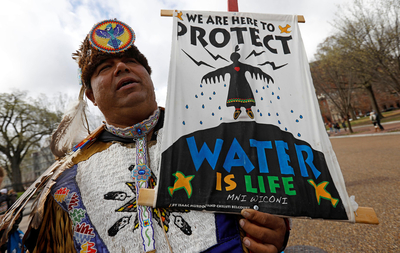About 15 years ago the anthropologist Shepard Krech sparked a controversy with his book, The Ecological Indian, which basically argued that the North American Indians were not the proto-environmental saints that some had previously made them out to be. To his credit, Krech wanted to put indigenous peoples who had often been seen as “natural”—in other words, static and unchanging—back into history, arguing that regardless of whether the contemporary world judged their practices ecological or not, these were a product of culture and ideas, not of some prelapsarian harmony with nature.
Krech was right about this, of course—at least to a point. We should resist any essentializing argument that suggests indigenous peoples are somehow automatically and inevitably more “in-tune” with nature. Yet in considering the stories recounted here today by our five insightful panelists, it also seems readily evident that there is something uniquely powerful in the ways that so many indigenous peoples—the Ojibwe, the Gros Ventre and Assiniboine, the Blackfoot, the Sami—from so many places around the globe, have become contemporary champions of the non-human world. To add an example from my own work, I'd mention the Achuar, a native people of the Amazonian jungles of Peru and Ecudaor, many of whom are now battling international corporations seeking to exploit the rich timber, oil, and mineral of their homelands. There are many others like them.
How can we account for this powerful grassroots—or jungle-roots, or tundra-roots—indigenous resistance to modernity’s insatiable drive to mine what it dismissively terms “natural resources” from every last square meter of the planet? In challenging the idea of the “ecological Indian,” Krech sought to remind us that native peoples were just as much a product of a malleable culture and history as Europeans. Yet in so doing he also tended to replicate the modernist analytical assumption that we can draw a clear sharp line between culture and nature, an analytical stance that tends to minimize the active agency of the non-human world in creating and shaping humans and their cultures. In his recent book, Beyond Nature and Culture, the French anthropologist Philippe Descola notes that the Achuar people do not recognize any categorical division between creative humans and a passive fixed nature of “natural resources”—in part, because the Achuar’s nature is itself dynamic and creative, a place teeming with other sentient plants and animals. In the Achuar ontology, their culture and ideas comes from a lively nature, not in distinction to it—an animist worldview that was long dismissed by the West, yet which is now increasingly supported by a growing body of new scientific and humanistic insights.
Of course, the modern environmentalist activism of the Achuar, Ojibwe, Gros Ventre, Assiniboine, Blackfoot, and Sami, also surely owes much to contemporary ideas about the environment and historic traditions. Yet can ideas alone, or a solely immaterial concept of culture, really explain the full nature of their passionate activism? I suspect not. Rather, I find it telling that when indigenous peoples speak out against the mass destruction wrought by a cyanide heap-leach gold mine or a colossal open-pit iron ore mine, it seems they often speak not just about themselves, but about their intimate relationship with the non-human organisms that these mines threaten. For the Ojibwe, it is their centuries-long connection to wild rice, a graceful shallow water-loving plant that had helped to pull them into a fertile bond with the wetlands of the Bad River. For the Sami, it is the reindeer, the intelligent social animals whose cooperation the Sami surely cultivated as much as created. For the Gros Ventre, Assiniboine, and the Blackfoot, it is perhaps a broader landscape itself, but within that, always their close relationship to the particular plants, animals, and mountains whose vibrant nature had given them so much.
To conclude, then, I wondered what our speakers might think of reviving the concept of the ecological Indian—but this time, when we say ecological, we would mean not just a relationship as defined by contemporary ecological science, but also the dynamic human partnerships that indigenous peoples have frequently formed with a world of extraordinary organisms and things—partnerships that endure today and that transcend conventional boundaries between culture and nature to suggest a much broader concept of the “ecological.” In this Anthropocene Epoch, the supposed “Age of Humans,” might this new understanding of the “ecological Indian” point us towards a less anthropocentric and more humble understanding of the human place on a creative planet?
This essay was written as a comment on a roundtable session that Timothy LeCain chaired at the the Western History Association Conference in St. Paul, Minnesota, October 2016. The panel, which focused on Mining and Native American Activism, was organized by Red Thunder Oral History Project co-coordinator, Tiya Miles. This piece first appeared in print on Timothy LeCain's blog, Exploring the Natural Born Human.




